THIS Tiny Hummingbird Lands On This Big Dog Then The UNTHINKABLE Occurs!
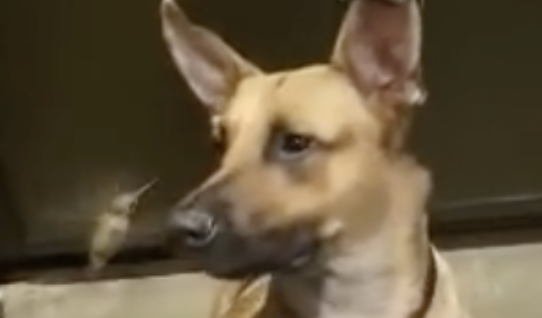
image via – youtube.com
It’s been said that “what goes around comes around” and for one dog and his best friend, a tiny hummingbird, that age old expression has never been truer. Life started out pretty rough for the unlikely pair and both had to overcome dire situations before they could get to the happy stage they are at now.
It was just last year that Rex was a feral dog living a rough and tumble life in Los Angeles California. Without a home or friend to call his own, the tough street smart dog’s destiny changed forever when he was picked up and rescued. Soon afterwards he was adopted by his current owner, Ed Gernon, and welcomed warmly into his home.
Rex adjusted well to his new living situation, transforming from dangerous and unpredictable into a much calmer and tamer type of dog. Then one day when Rex and Ed were out for a walk they noticed a little hummingbird on the ground.
It was covered in ants and at first glance it appeared to be dead. On a local news station report, CBS LA, Ed recalled that “It was this little creature, this fragile creature that the whole world wanted to kill and (Rex) was trying to protect her, so I thought I’d go the distance.”
He took the half dead bird home and lovingly began the process of nursing her back to health. Under the close supervision of a very interested and concerned Rex he hand-fed the poor baby every 15 minutes homemade sugar syrup.
Before long the bird, now named Hummer, was strong enough to fly and go her own way. However, instead of leaving Rex and Ed, Hummer ended up staying and is now best friends with the dog who inspired her rescue.
The adorable pair now spend every moment of the day together enjoying each others company. On the YouTube video Ed posted of the two he wrote that Hummer “developed a total crush on Rex. Wherever he was, she wanted to be close by. She even started bathing in his water bowl, killing time while he ate before she’d start playing with him again. So strange, but amazing.”
That was over a year ago and today Hummer is still living with her new family. She’s unbelievably well-adjusted to her new domestic life, so much so that she lets Ed give her little kisses! In true karmic fashion, the good deeds have come full circle in this story.
Ed summed it up best when he said “I rescue this dog, he rescues the bird, the bird rescues all of us in a weird sense, and it’s just a miracle.”
Check out the videos to see the beautiful bird and happy family interacting and to hear more of their awesome story!
Please Share This Story With Family and Friends 🙂
He Blows Hot Air On His Hummingbird Feeder With A Hair Dryer. Now Watch How The Bird Reacts..
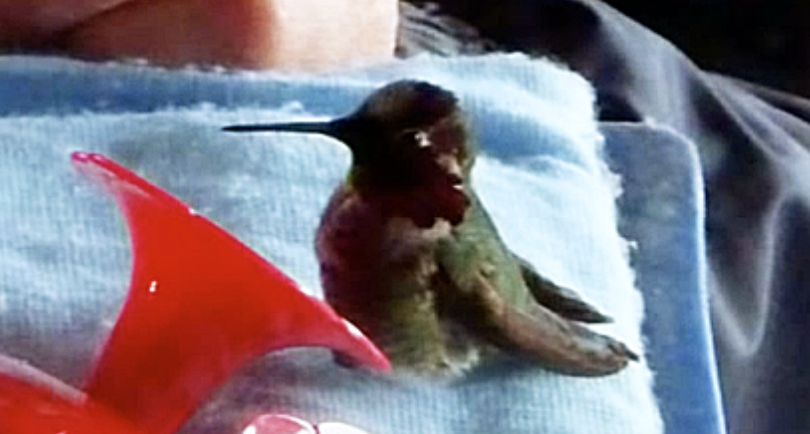
image via – youtube.com
Hummingbirds are one of mother nature’s coolest creations and they hold quite a few interesting records in the bird world. Some species are among the smallest birds on earth, which explains why they also have the smallest nests and lay the smallest eggs.
Not only that, they also beat their wings the fastest, some up to 90 times per second! They also hold the title of eating the largest amount of food, since many need to consume at least half their body weight in food every single day in order to stay active and healthy. In turn, they have the highest known metabolic rate in the entire animal kingdom.
Plus, they have the ability to fly backwards, can change direction on a dime, and are lightning quick. All these traits and their beautiful, glittering feathers are what makes hummingbirds absolutely mesmerizing to watch. By their nature, they are very inquisitive, and if you put up a feeder they’ll be drawn towards it because their curiosity seems to always get the best of them.
Most hummingbird species in North America spend summers breeding in the Eastern states before heading south to winter in Central America. Some of them end up in Sedona, Arizona, home of the famous red rock formations and well known for its natural beauty.
The southwestern area is a place many wintering birds call home and it’s also where YouTube user Blueskeye lives. Blueskeye filmed an incredible interaction he had with a pair of hummingbirds and thankfully shared it so you can see just how adorable and sweet it truly was.
He explained the background of the story and wrote that back in February of 2011 Sedona was experiencing an extremely cold snap of winter weather. It was so cold that the nectar he put out to feed a pair of friendly hummingbirds kept freezing up within an hour of being outside.
To keep the hummingbird’s tummies full and the food from freezing up, he placed a heating pad underneath one of the feeders. When he checked on it the following morning he saw a lovely sight, the two tiny birds were sitting atop the heating pad and cozily drinking up their food!
Blueskeye named the pair of Anna’s Hummingbirds Rocky and Adrian, no doubt in homage to the characters in the award winning Sylvester Stallone film, Rocky. He and the two hummingbirds became very good friends. In fact, they were so close that little birds would sit on his hand while feeding and right next to him while he unfroze their food with a hairdryer!
The birds must have been really cold because Rocky even sat in front of the dryer so the warm air would blow on him. Most animals are scared of the powerful and strange rush of warm air they make, not to mention the loud noise, and many a cat or dog has been terrified by a dryer.
If you didn’t previously understand why people love and go out of their way to feed and attract hummingbirds, perhaps this video will show you why. The lively little birds are not only pretty to look at, they’re also very friendly and easily become accustomed to being around people.
After time many won’t hesitate to feed at flowers or nectar feeders located close to windows and houses. Support your local hummingbirds today and set up your own feeder. Then you can watch them play and interact with each other as they zip around!
Please Share This With Your Family and Friends 🙂
At First I Thought It Was A Normal Hummingbird But When His Head Starts Moving An Unexpected Surprise!
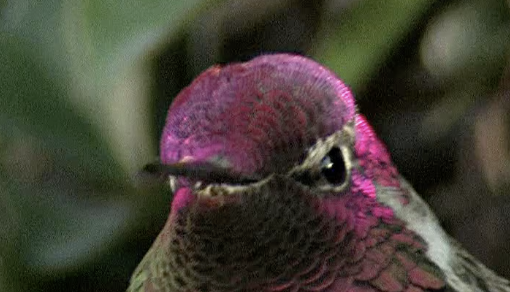
If you live in North America and see a hummingbird you’re likely looking at the ruby-throated kind, which is the most common species of the tiny birds. They usually spend summers breeding in the Eastern states before heading south to winter in Central America. Ruby-throated hummingbirds are naturally very inquisitive and if you put up a feeder they will be drawn to it because their curiosity always seems to get the best of them.
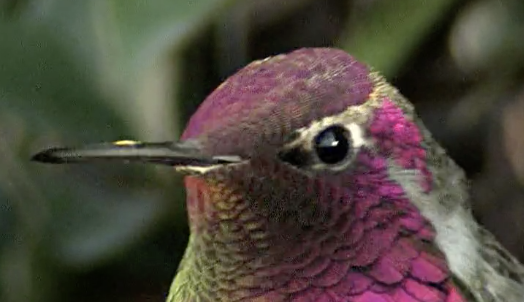
The beautiful little birds are lightning quick and love to zip around, so it can be hard to get a good look at one. To gain a new perspective on just how brilliant and good looking the ruby-throat is, check out this amazing video of a male one up close.
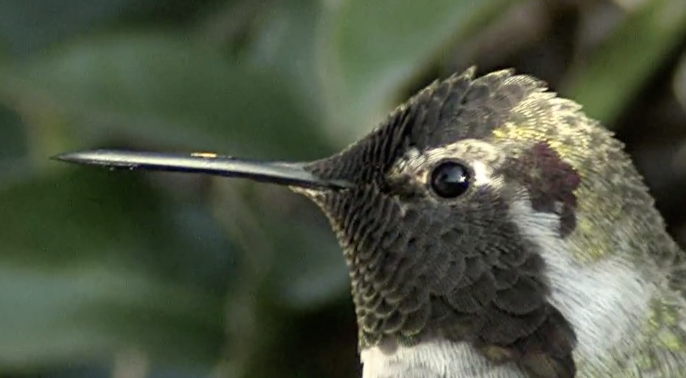
As the bird moves his head back and forth the sunlight reflects off his neck and throat feathers, causing them to change colors. This iridescent plumage glitters and seems to magically shift through different jewel tones. It’s one of mother nature’s most colorful displays and absolutely mesmerizing to watch.
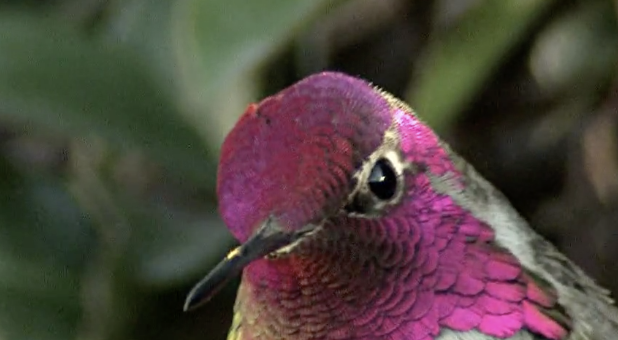
The feathers are not actually the color of any of the hues we are seeing. Instead, there are many evenly spaced tiny slits on the feathers which act in unison to create an illusion of different, and ever-changing, coloring. As the light hits the feathers it interacts with the slits and gets diffracted, and that separation causes new wavelengths, which our eyes see as the sudden color changes.
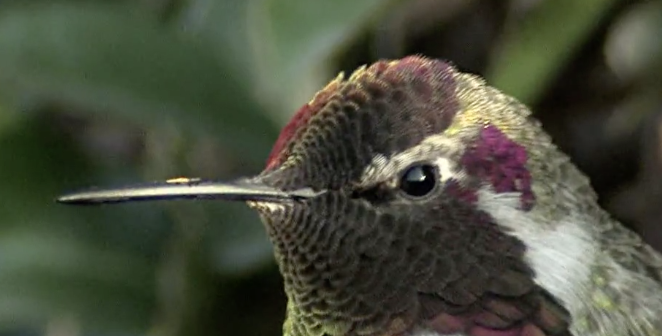
If you didn’t previously understand why people love and go out of their way to feed and attract hummingbirds, perhaps this video will show you why. Plus, the lively little birds are not only pretty to look at, they are also very friendly.
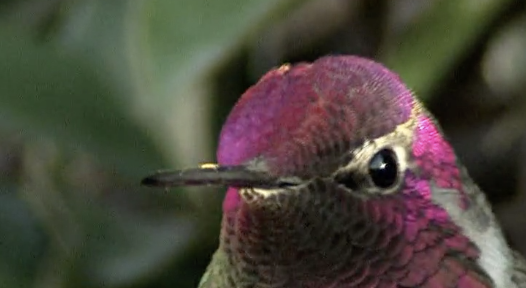
They easily become accustomed to being around people and won’t hesitate to feed at flowers or nectar feeders located close to windows and houses. Support your local ruby-throated hummingbirds today and set up your own feeder. Then you can watch them play and interact with each other as they zip around and magically change color. They can do all that and more, so what else could you ask for?
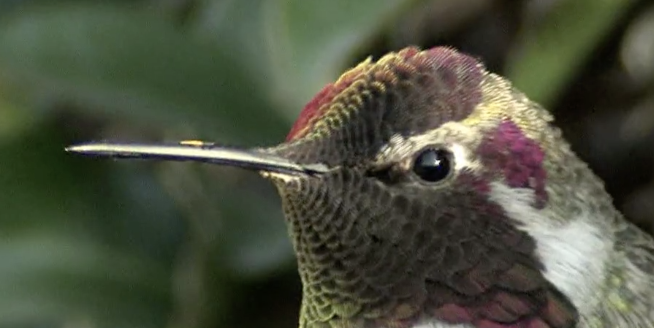
Please Share With Family and Friends
Sun Gazing is pleased to introduce you to Explore.org’s live “Hummingbird Cam”.
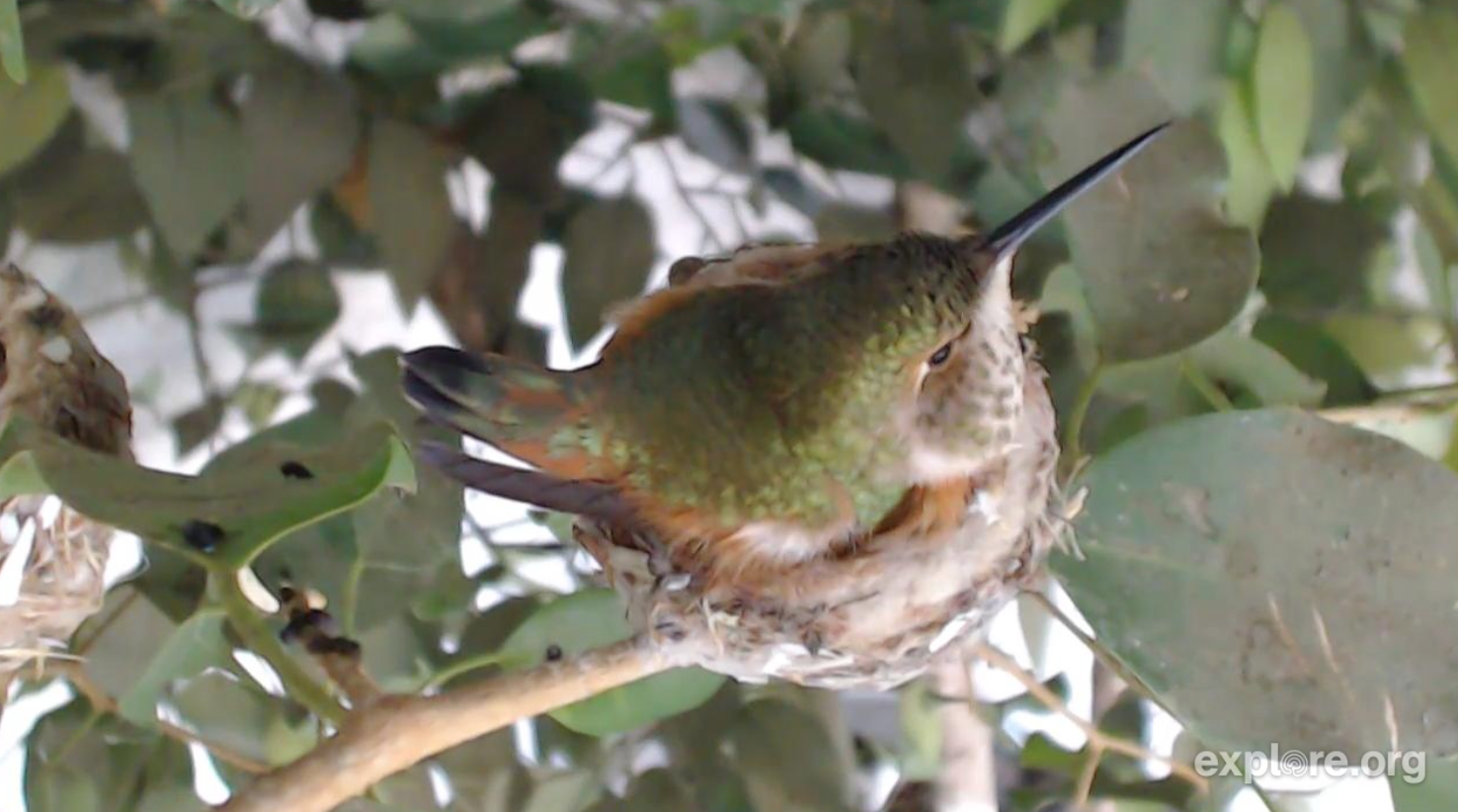 image via – http://explore.org
image via – http://explore.org
Sun Gazing is pleased to introduce you to Explore.org’s live “Hummingbird Cam”. Explore.org’s philanthropic mission to to connect humanity to nature and we encourage you to “like” their Facebook page – <Explore.org> and check out this – <http://explore.org/live-cams/ player/rosie-hummingbird-nest>, features a tiny hummingbird nest about the size of a golf ball.
Two chicks have recently hatched, and viewers of the camera can watch live as Rosie, the mother hummingbird, feeds and watches over them. Like all female hummingbirds caring for her young, you will see that Rosie is a very busy mama. Her two eggs hatched on January 26, 2017, bringing Acacia & Aster into the world at 11:17am & 1:00pm. Acacia, was named after the flower that though small, is strong and symbolizes love and friendship, while Aster means “star”. These very special and delicate offspring will be yours to watch evolve and grow stronger, as Rosie nurtures them.
Hummingbirds have a magical quality throughout their lives; watching these vulnerable creatures receive food and warmth from their mother is mesmerizing. Generally speaking, the oblong eggs of hummingbirds, (around 1/2 inch long x 1/3 inch wide), incubate between 14 to 17 days. Upon hatching they have no feathers, are about an inch long and only weigh about one-third of the weight of a dime. The biggest concern in their early care is regulation of their body heat, which will be one of Rosie’s main jobs for the next 8 to 12 days. Acacia and Aster will have developed enough temperature regulation at about two weeks of age, to be in the nest through the night and stay warm.
Watching Mama Rosie feed them regurgitated insects during this time, is really amazing to behold, as she inserts her long beak down their throats, one to three times per hour. These enchanting chicks will leave the nest when they are ready to; depending on weather conditions this usually occurs after three weeks. Rosie will continue to instruct her fledglings after they first leave the nest, to insure that they know how to catch bugs and find nectar, so that they can successfully separate from their loving mother. We hope you enjoy this unique opportunity to watch nature at it’s most beautiful.
Please SHARE This With Family and Friends 🙂




